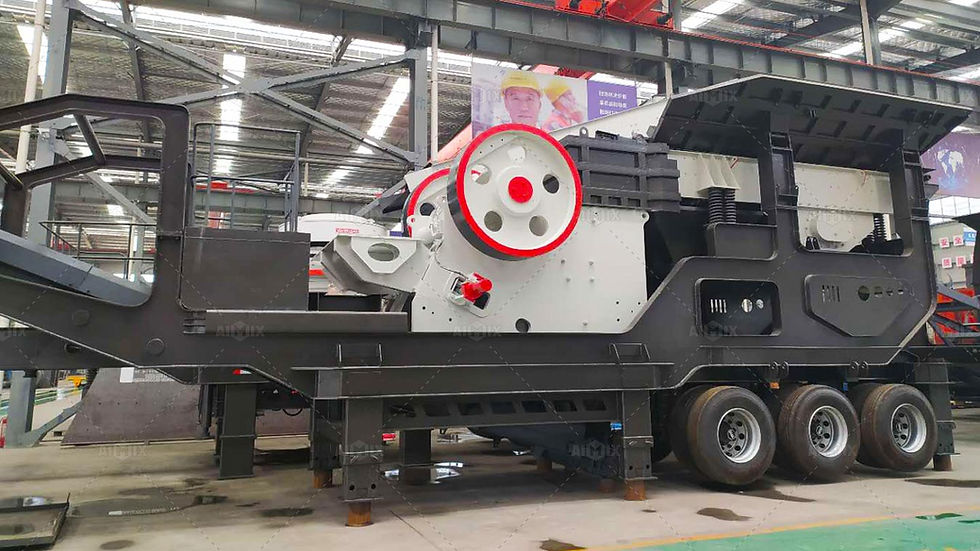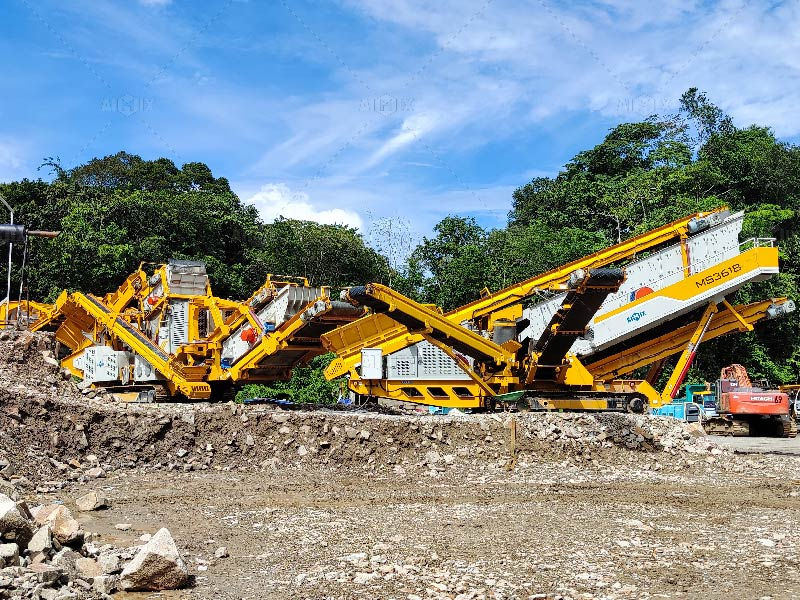Humanized Control of Stone Crusher Plant Starts Before Delivery
- info515452
- 6月26日
- 讀畢需時 3 分鐘
In the evolving mining and aggregate industry of Latin America, automation and user-centric design are becoming essential standards in heavy machinery. As crushing operations expand into more remote and diverse locations, the ability to control and operate equipment easily, safely, and efficiently becomes a deciding factor for investment. That’s why the humanized control of a stone crusher plant(planta trituradora de piedra en venta) doesn’t begin on-site—it starts well before delivery, during factory configuration, testing, and interface design.
Manufacturers are now embedding smart, human-friendly systems into everything from the control panel of a jaw crusher to the onboard software of a mobile stone crusher. This article explores how pre-delivery planning, interface development, and user training are transforming how Latin American customers interact with their crushing equipment from day one.

From Complex Machinery to Intuitive Operation
Traditionally, running a stone crusher plant required experienced operators, complex manual procedures, and a significant amount of on-the-job training. Today, that model is quickly becoming outdated. Humanized control means creating systems that are easy to understand, fast to use, and designed for real-world working conditions.
In practice, this involves:
Touchscreen interfaces with multi-language support
Real-time visual alerts and error guidance
Centralized dashboards for monitoring motor loads, vibration, oil pressure, and belt speeds
Automated sequences for plant startup, shutdown, and emergency response
These smart controls are especially valuable for mobile stone crusher(planta chancadora movil) units, which may be operated by different crews across multiple sites. With simplified interfaces and preset functions, even operators unfamiliar with the machine can get it running in minutes.
Pre-Delivery Programming and Testing
Humanized control is not just about interface—it’s also about what happens behind the scenes before the equipment is ever shipped. Before delivery, manufacturers conduct extensive software configuration and logic programming based on the plant layout, material type, and desired output.
For example, in a plant that includes a jaw crusher and secondary impact crusher, the PLC system will be programmed to synchronize the feed rate between stages. During pre-delivery testing, engineers:
Upload job-specific process logic
Simulate different material scenarios and output requirements
Adjust control parameters for energy efficiency
Test safety interlocks and emergency stop functions
The benefit for Latin American customers is clear: when the stone crusher plant arrives, it’s not a blank slate—it’s already optimized for their project requirements, reducing commissioning time and human error.
Safety by Design, Not Just Policy
Humanized control also enhances safety by anticipating and automating risk responses. Rather than relying solely on operator vigilance, modern stone crusher plant systems actively prevent dangerous situations.
This includes:
Automatic overload detection and shutdown
Interlocked guards and sensor-triggered cutoffs
Alert systems for high temperature, vibration, or oil level changes
Remote diagnostics via smartphone or tablet
For mobile stone crusher systems, which often operate in uneven or less-controlled environments, these features are critical. The ability to respond to problems automatically—even when an operator is several meters away—can prevent equipment damage and personal injury.
Supporting Local Training and Remote Assistance
Humanized control goes beyond the hardware—it includes support for human operators through accessible training and responsive assistance. For Latin American clients, especially those working in multilingual and geographically diverse teams, manufacturers now offer:
Interactive user manuals with step-by-step visuals
Pre-installed demo modes on touchscreen systems
QR code access to video tutorials on-site
Remote commissioning support via Wi-Fi or mobile signal
When a jaw crusher(trituradora a mandibula) or screen vibrates outside of its normal range, the system can not only shut down automatically but also notify the support team and suggest next steps. This reduces downtime and allows maintenance teams to intervene quickly, even if a trained engineer is not on-site.
Why It Matters in Latin America
Latin America’s mining and aggregate projects often face challenges like limited skilled labor, long supply chains, and extreme environmental conditions. A well-designed stone crusher plant with humanized control addresses these issues by:
Reducing the learning curve for new operators
Minimizing manual input and human error
Offering faster diagnostics and easier maintenance
Enhancing safety without slowing down productivity
As a result, contractors can deploy equipment faster, reduce training costs, and operate with more confidence—even in remote or complex terrain. For governments and private firms under pressure to meet deadlines, every hour saved in setup and troubleshooting adds value.
Final Thoughts
The shift toward humanized control is redefining how crushing plants are built, tested, and used. For every mobile stone crusher or high-capacity jaw crusher, the journey toward smarter operation begins long before the equipment reaches its destination. By embedding user-friendly design, pre-programmed logic, and smart safety systems at the factory stage, manufacturers empower Latin American clients to focus less on machinery and more on material production.
In an industry where uptime is everything, intuitive control isn’t a luxury—it’s a competitive advantage. And in Latin America, it’s quickly becoming the new standard for any serious stone crusher plant investment.






留言